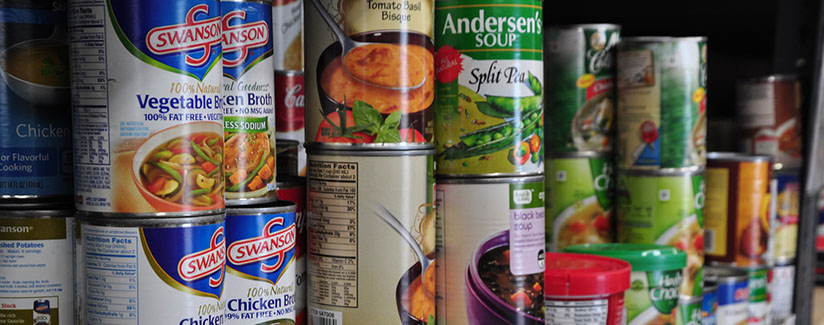
Should You Rinse Canned Food?
When you’re purchasing canned food, for instance, canned beans, do you look for low-sodium varieties? Or, once you open a can, do you rinse the food, hoping to rinse away the salt? Have you wondered if there is enough difference between the low-sodium and regular-sodium items to make it worth the cost difference?
To learn more about sodium content in canned goods, we reached out to Linda Benjamin Bobroff, PhD, RD, LD/N, Dept. of Family, Youth & Community Sciences, University of Florida, and Danielle Hammond-Krueger, MPH, RD, LD, Extension Program Specialist, Department of Nutrition and Food Science, Texas A&M AgriLife Extension Service.
Dr. Linda Benjamin Bobroff: “According to the USDA Nutrient Database, rinsing the beans doesn’t decrease the sodium very much, but there is a great difference between regular and low-sodium beans. As an example, for 100 grams of canned red kidney beans:
| Regular, solids and liquids: | 655 mg sodium |
| Low sodium, solids and liquids: | 117 mg sodium |
| Regular, drained, solids only: | 231 mg sodium |
| Regular, drained and rinsed, solids only: | 208 mg sodium |
Please consult the USDA Nutrient Database for values of specific canned food.”
Danielle Hammond-Krueger: “There are a few studies examining the reduction in sodium based on the principles of rinsing and draining various canned vegetables. The percent reduction in sodium per serving varies from study to study. I have included those resources below.
Despite the variance in percent sodium reduction, the principles of draining and rinsing do have merit. The reduction in sodium can vary between 9-41%. In the Jones and Mount (2009) study, they particularly examined specific bean varieties and looked at both the draining and rinsing techniques separately. In draining (2 minutes) the packing liquid, they saw a reduction of 36% sodium content. Rinsing (10 seconds under lukewarm water) and draining (2 minutes) beans resulted in a 41% sodium reduction. However, an additional study (Haytowitz, 2011) showed lower sodium reduction in a variety of canned vegetables, approximately 9-23%.
According to FDA nutrition labeling standards, items labeled as “low sodium” would require them to contain 140 milligrams of sodium or less per serving. The results indicated in the Jones and Mount study resulted in reduction of 503 milligrams per serving to 295 milligrams per serving for the rinsing and draining technique. Unfortunately, neither study can mimic the sodium content in “low sodium”-labeled products. However, if cost is an issue, rinsing and draining canned vegetables can lower the sodium content to be considered “reduced sodium.” I have not seen any indication to not rinse canned vegetables to decrease sodium content. In fact, Bush Brothers and Company has recommended rinsing and draining as a practice for reducing sodium content in canned beans. One should note: There is minimal loss of other nutrients such as calcium, iron, and certain vitamins depending on their presence in the product. However, these results varied and were not significant in loss based on percent daily value.
Bean varieties provide a great source of fiber, folate, iron, calcium, and are a good source of protein. For those individuals who require a low-sodium diet, the low sodium option for canned beans may be the best option. However, for those consumers who avoid purchasing canned vegetables due to the sodium content, rinsing and draining techniques can help to reduce the sodium content. Consumers can enjoy the nutritional benefits and convenience of canned beans while reducing sodium by following the practice of rinsing and draining.”
Sources:
Jones JB, Mount JR. Sodium reduction in canned bean varieties by draining and rinsing. Presented at the Institute of Food Technologists Annual Meeting; June 6–10, 2009; Anaheim, CA. 2009.
Bush Brothers and Company. Enjoying nutrient-rich canned beans with less sodium (fact sheet) Knoxville, TN: Bush Brothers and Company; 2009.
Haytowitz DB. Effect of draining and rinsing on the sodium and water soluble vitamin content of canned vegetables. Nutrient Data Lab, USDA-ARS-BHNRC; FASEB Journal, 25:609.3, 2011.
“Collection of canned food items in the pantry” by Salvation Army USA West is licensed under CC BY.



























